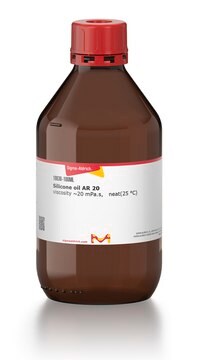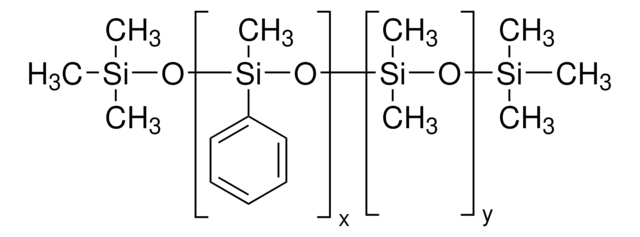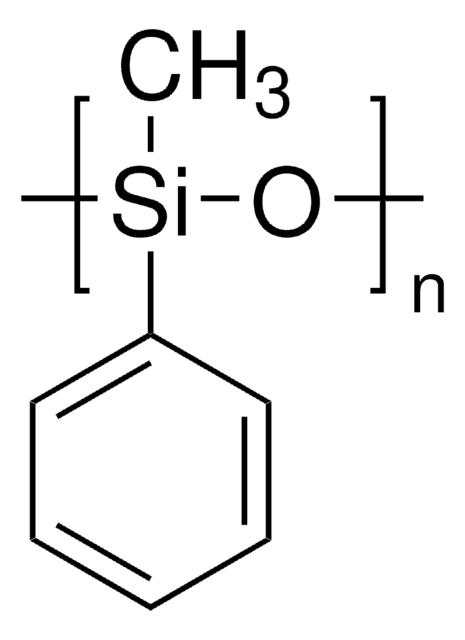378364
Silicone oil
viscosity 100 cSt (25 °C)
Synonym(s):
Dimethylsilcone fluid, Poly(dimethylsiloxane)
Sign Into View Organizational & Contract Pricing
All Photos(1)
About This Item
Linear Formula:
[-Si(CH3)2O-]n
CAS Number:
MDL number:
UNSPSC Code:
12162002
NACRES:
NA.23
Recommended Products
vapor density
>1 (vs air)
Quality Level
vapor pressure
<5 mmHg ( 25 °C)
5 mmHg ( 20 °C)
form
viscous liquid
refractive index
n20/D 1.403 (lit.)
viscosity
100 cSt(25 °C)
bp
>140 °C/0.002 mmHg (lit.)
density
0.96 g/mL at 25 °C
Looking for similar products? Visit Product Comparison Guide
Related Categories
General description
Silicone oil is a liquid based siloxane that is part of the methyl silicone fluid system. It has a viscosity of 100 cSt with a refractive index of ~ 1.402 and a dielectric strength of ~ 14 kV/mm. It′s surface tension tends to increase with an increase in the viscosity.
Application
Silicone oil can be used for a variety of application such as: development of magnetorheological elastomer for force sensors, a cosmetic additive, a dielectric coolant, a lubricant and antiflatulent agent.
Storage Class Code
10 - Combustible liquids
WGK
WGK 1
Flash Point(F)
214.0 °F - closed cup
Flash Point(C)
101.1 °C - closed cup
Personal Protective Equipment
dust mask type N95 (US), Eyeshields, Gloves
Choose from one of the most recent versions:
Already Own This Product?
Find documentation for the products that you have recently purchased in the Document Library.
Customers Also Viewed
Sensing capabilities of graphite based MR elastomers
Tian TF, et al.
Smart Materials and Structures, 20(2), 025022-025022 (2011)
Bibin M Jose et al.
Scientific reports, 8(1), 14159-14159 (2018-09-23)
In this work, we study the spontaneous spreading of water droplets immersed in oil and report an unexpectedly slow kinetic regime not described by previous spreading models. We can quantitatively describe the observed regime crossover and spreading rate in the
A highly adjustable magnetorheological elastomer base isolator for applications of real-time adaptive control
Li Y, et al.
Smart Materials and Structures, 22(9), 095020-095020 (2013)
Silicones
Moretto H, et al.
Ullmann's Encyclopedia of Industrial Chemistry (2000)
Mechanism of Stabilization of Silicone Oil- Water Emulsions Using Hybrid Siloxane Polymers
Mehta SC and Somasundaran P
Langmuir, 24(9), 4558-4563 (2008)
Global Trade Item Number
| SKU | GTIN |
|---|---|
| 378364-1L | 4061838146021 |
| 378364-250ML | 4061831836073 |
Our team of scientists has experience in all areas of research including Life Science, Material Science, Chemical Synthesis, Chromatography, Analytical and many others.
Contact Technical Service




